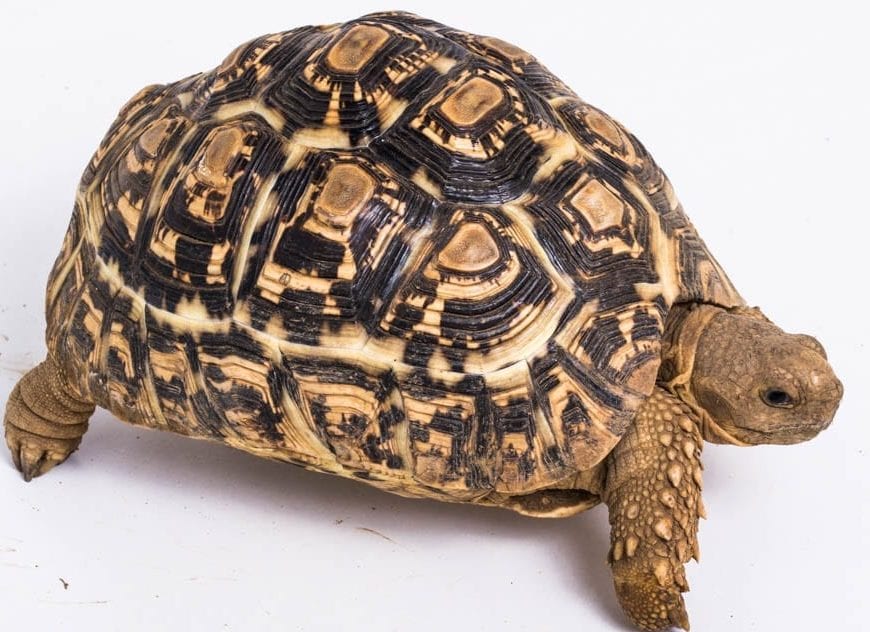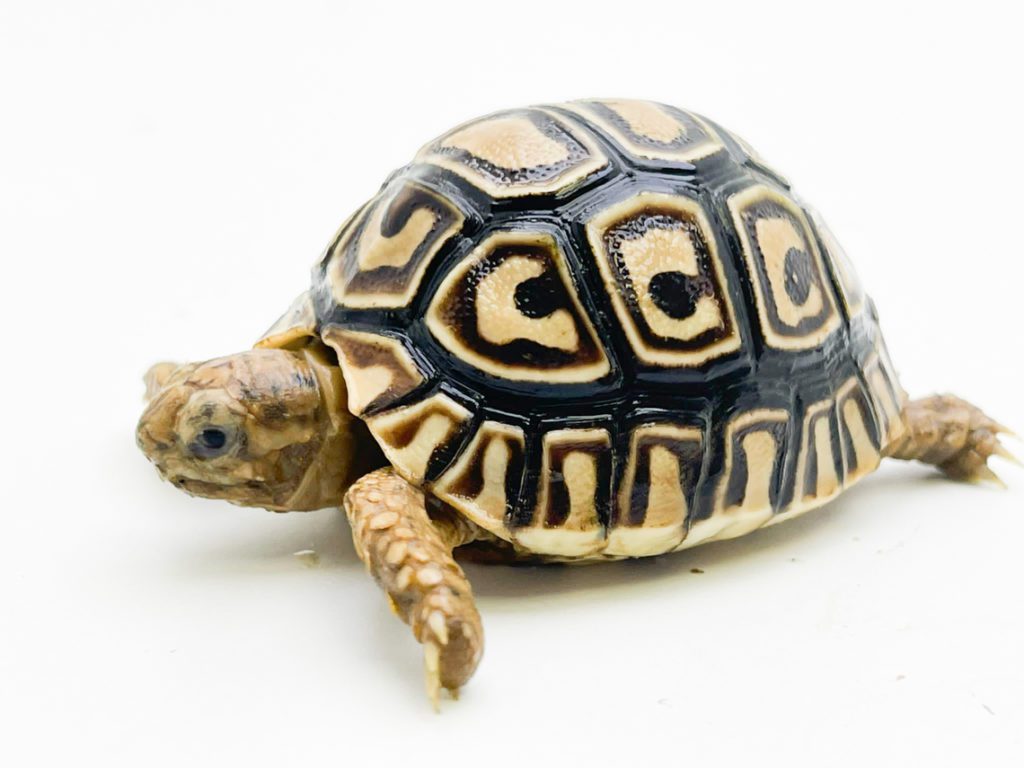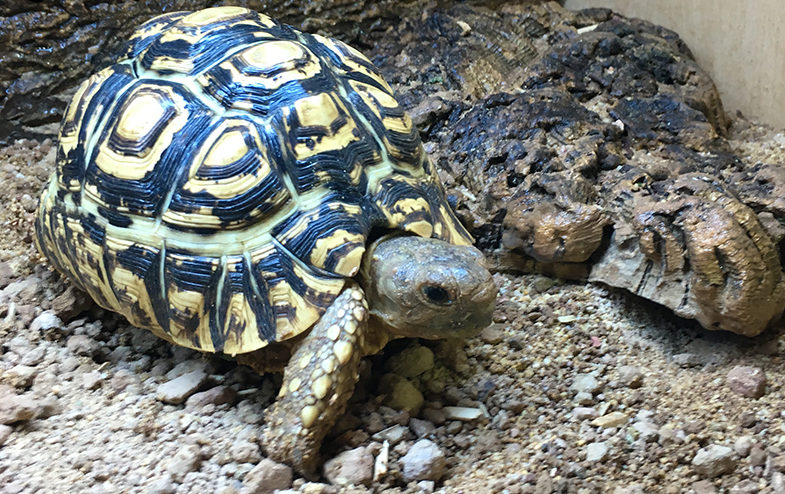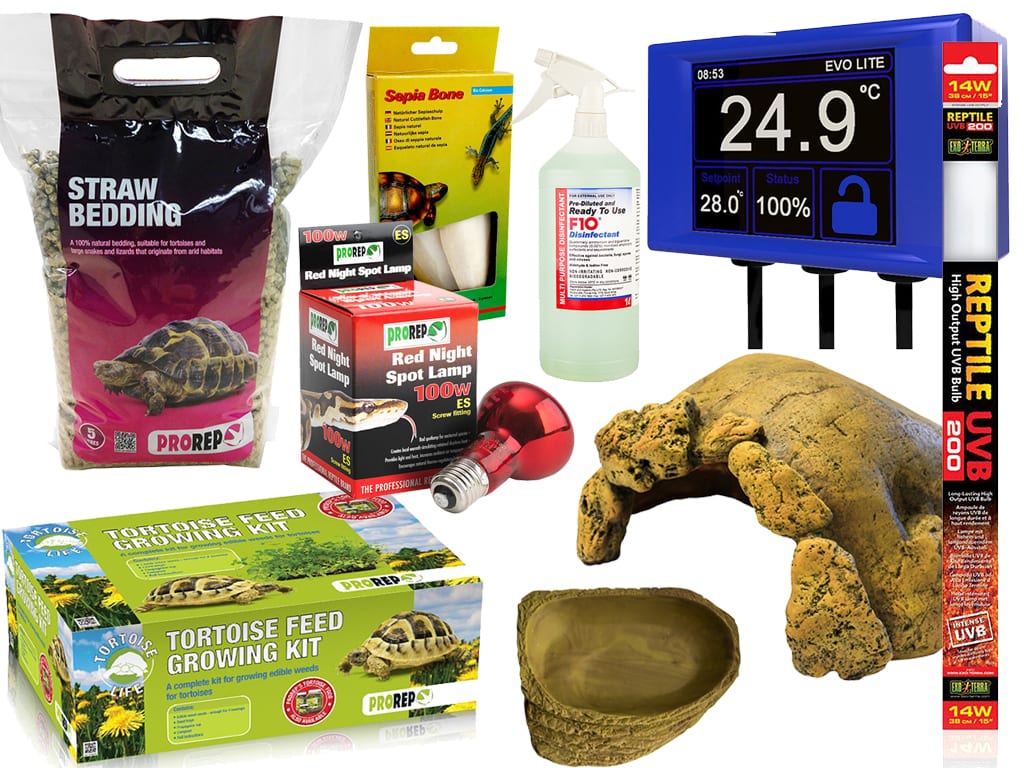
Leopard Tortoise
Care Sheet

Leopard tortoises come from Africa, inhabiting savannas where hot temperatures and high UVB are present. They require both Heat and UVB in captivity which takes the form of a basking lamp and UVB tube, or a dual Heat & UVB bulb along with a Calcium +D3 supplement powder.
Leopard tortoises require a diet of dark leafy greens with the occasional tomato treat once every week or so. It is important that they are not fed watery veg like cucumber, peppers and tomato’s often as they disrupt the bowels and cause watery stool as well as not providing the essential vitamins your tortoise needs.
You may enjoy taking your tortoise out during the peak summer heat, we recommend minimising this time to 15-30 minutes so that your tortoise doesn’t get cold. Be ware of wild plants which may be poisonous to your pet.


HANDLING YOUR LEOPARD TORTOISE
Tortoises are independent animals who although do well in captivity are not the kind of pet that enjoys a cuddle. Leopard Tortoises like to be on the ground or a surface so that they can walk around at will and do not enjoy held in one place.
Try to collect your tortoise from beneath, never pull its legs or put your hands close to its mouth. Tortoises have a hard beak so their bite can be painful- always keep fingers away from their mouths. Tortoises pull their legs in to protect themselves so be careful not to put fingers under their shell where they can be trapped. Tortoises should be kept level and not tipped or rolled over for long periods of time as this can upset the chemicals in their brains.



SEXING YOUR LEOPARD TORTOISE
Sexing tortoises is different depending on species. Tortoises can be very hard to sex when small, but once a tortoise is large enough to start to develop more distinctive characteristics there are a couple of noticeable differences.
Male Leopard tortoises are generally quite a bit smaller as adults. Males will have a longer tail. Females have a small tail and are larger as adults.
As adults, females will have a flat plaston and a male plastron will be curved. This allows them to mate.


HEALTH CHECK
Eyes– Eyes should be clear and open wide. Look out for any swollen eye lids or swelling around the eye as this can signify an eye infection which are common in tortoises. Turtle eyes is a great product to treat the eyes with and requires a couple of drops daily to clear the infection. You can also use saline and a cotton pad to gently swab the eyes daily. Separate tortoises which show signs of infection to avoid spreading.
Shell– The shell should be smooth with no chips or signs of pyramiding. Scutes which raise and point at the top are referred to as pyramiding in tortoises and are a sign of MBD (metabolic bone disease) which means that the tortoise has not received enough UVB and calcium + D3. it is important to change your UVB bulb every 6-8 months and dust food with calcium +D3 powder twice a week. The UVB and D3 work in hand to keep your tortoises shell and bones strong.
Stool– your tortoises stool should be firm and moist. Watery stools are caused by feeding your tortoise too many high water content fruits or vegetables. Encourage leafy greens like Kale, Spring Greens and Cabbage instead of things like lettuce, cucumber and tomato.








ADVICE FOR LIFE!
When you buy your Pet & Housing from us!
Priority Boarding | Advice available face to face, via Telephone, Facebook Chat, Email, Instagram


